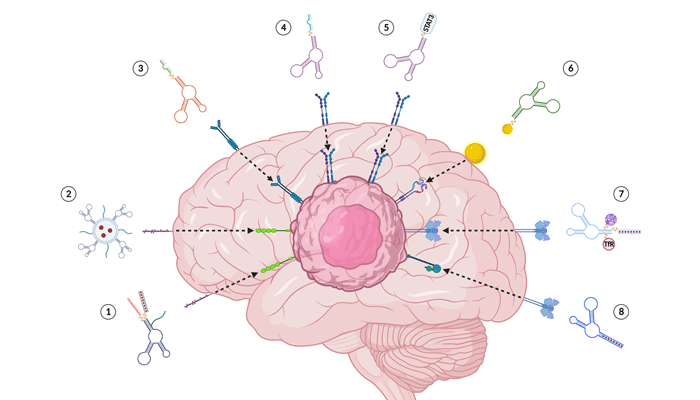
Rising to the challenge: recent aptamer-conjugate success in treating glioblastoma
MINIREVIEW
![]()
ISSN: 2514-3247
Aptamers (2022), Vol 6, 28-37
Published online: 04 December 2022
Full Text (Giles ~2224kb) | (PubMed Central Record HTML) | (PubMed) | (References)
Breanna Giles1,2, Rasika M Samarasinghe1,2, and Sarah Shigdar1,2,*
1School of Medicine, Deakin University, Geelong, VIC 3220, Australia
2Institute for Mental and Physical Health and Clinical Translation, School of Medicine, Deakin University, Geelong, VIC 3220, Australia
*Correspondence to: Sarah Shigdar, Email: sarah.shigdar@deakin.edu.au, Tel: +61 3 52272846
Received: 27 June 2022 | Revised: 08 November 2022 | Accepted: 10 November 2022
© Copyright The Author(s). This is an open access article, published under the terms of the Creative Commons Attribution Non-Commercial License (http://creativecommons.org/licenses/by-nc/4.0). This license permits non-commercial use, distribution and reproduction of this article, provided the original work is appropriately acknowledged, with correct citation details.
ABSTRACT
Glioblastoma reflects the most lethal and aggressive adult brain cancer with strong metastasising capabilities and molecular differences between various tumour types. These differences, among other factors, have contributed to the poor success rates of current therapeutics that often results in tumour recurrence. The highly invasive and toxic nature of current therapeutics leads to high mortality and low patient survivability rates, thereby demonstrating the importance of developing novel targeted therapies for treating glioblastoma. The main hurdle chemotherapeutics and drug delivery mechanisms face is the inability to cross the blood-brain barrier, however, aptamers have shown promise in overcoming this to effectively deliver drug payloads to cancerous cells. Aptamers are single-stranded oligonucleotide sequences that possess many desirable characteristics as a drug delivery vehicle over alternative targeted therapeutics, including a high binding specificity and sensitivity towards targets, minimal batch variability, lack of immunogenicity, and ease of modifications. While few researchers have been successful in generating aptamer-conjugates that can initiate therapeutic responses in glioblastoma tumours following blood-brain barrier crossing, many aptamer-conjugates show promise based on preliminary findings. Such conjugates include the addition of chemotherapeutic drugs, functionalised nanoparticle complexes, or small interfering RNA chimeras to aptamers. Herein, this review focuses on addressing why aptamers are ideal candidates for targeted therapeutic delivery, the difficulties chemotherapeutics and drug delivery mechanisms face, and an overall update of various aptamer-conjugates over the past 6 years that show promise in crossing the blood-brain barrier to treat glioblastoma.
KEYWORDS: Aptamer-conjugates, blood-brain barrier, functionalised nanoparticles, glioblastoma, siRNA chimeras, therapeutics
